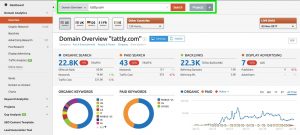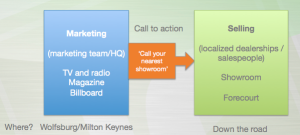Explore the facts and fiction surrounding composable CDPs and how to make them work for your organization.
Where there’s hype, there’s curiosity. But in marketing technology, hype is often accompanied by confusion. Martech buyers continually work to stay on top of what’s new and exciting. This requires cutting through the product marketing vocabulary and understanding what a particular topic or trend can do to create value and how it applies to your organization’s needs.
Composable CDP is another such topic, drawing a variety of interpretations and unique positioning from different providers attempting to stand out from the noise. Buyers must beware of this trend, as there are some details that vendors aren’t fully explaining as part of their stories.
Brutal truth 1: Composable CDP is not a thing
As momentum builds around composable architectures, messaging aligns with the excitement. CDP providers have been quick to embrace this pattern and even describe their platforms as composable. However, a tool itself is not composable. Architectures are composable. Tools that support interoperability and MACH principles are good citizens within a composable architecture.
CDPs are especially useful when organizations cannot implement their own cloud-native customer data store and can more easily implement a commercial off-the-shelf solution, or “packaged” CDP, that helps them realize the benefits of cloud technologies by managing and decisioning on its customer data.
As organizational cloud capabilities have matured, brands are creating their single customer view (SCV) with cloud-native applications and services that solve for identity, data modeling and data quality. They no longer need the CDP to solve for SCV. Some CDPs are accommodating how brands are shifting their approach to managing customer data in the cloud. This enables a modular approach to integrating into the martech stack and rebranding as a “composable CDP.”
Key to buyer success: Take a capability-focused view
Once the SCV moves to a cloud database, the packaged software is simply no longer a CDP. The software has abandoned responsibility for identity resolution, data integration and data storage capabilities.
In a composable architecture, what remains of the “CDP” operates primarily as an orchestration platform. Its key capabilities include:
- Managing audiences.
- Managing journeys.
- Developing predictions with machine learning.
- Activating the customer data.
Ultimately, they help you make decisions and deliver experiences based on those decisions.
These are critical capabilities for personalization and customer experience, which are not trivial. Finding the best match for your organization’s needs requires a thorough analysis of these capabilities.
Brutal truth 2: You do not need a ‘Customer 360’
In a composable architecture, orchestration providers (calling their platforms names such as “data activation,” “reverse ETL” and “composable CDPs”) will tell you that you simply need a “Customer 360” that resides in a cloud database.
For too long, the industry has been focused on creating this 360-degree view of the customer — creating a longitudinal view of all of a customer’s online and offline interactions — before you can truly understand who a customer is and how to have a conversation with them. This approach requires:
- An exhaustive approach to identity resolution.
- Significant data collection and, therefore, data quality effort.
- An extremely complex data integration implementation.
In reality, 80% of organizations do not accomplish a Customer 360, so chasing it is not a wise investment of time and budget.
Key to buyer success: Start with a ‘Customer 101’
Organizations are collecting massive amounts of data today in their data lakes. What’s required to get started is a “Customer 101” — the introductory level or beginner’s view in understanding the subject area of the customer. Building a Customer 101 requires focus on the right data — data that most matters and will fuel your initial machine learning efforts.
If you start by genuinely understanding the questions that the different parts of the organization want to ask of the data, you will likely find that to answer 80% of those questions, you only need 20-30% of the data. This is your Customer 101.
Over time, you will add to your understanding of customers with more data. This should be accomplished by:
- Starting with less data.
- Testing and learning.
- Failing fast.
- Adding data based on those learnings.
Introducing machine learning capabilities is the best way to accelerate your learning and get more from less data by starting with the right data — your Customer 101.
Brutal truth 3: Composable CDP is not a new paradigm
Composable CDP proponents might lead you to believe this is an exciting new approach to managing customer data and your marketing programs. However, this is just another example where “what’s old is new again.”
Direct marketers have long been building centralized databases for marketing execution, analytics and measurement, connecting an orchestration tool to create audiences and distribute to activation platforms. We used to refer to that composable architecture as a marketing database with campaign management, statistical modeling and reporting tools.
Key to buyer success: Pick your modules wisely
Things have evolved since the original composable martech stacks. There’s now support for real-time data pipelines and API integrations. Channels have grown in number and complexity beyond outbound traditional direct marketing touchpoints of telemarketing, direct mail and email. Thus, we need more modern tooling.
Understanding what capabilities and level of sophistication you require is the first problem to solve. For instance, marketers want to be able to do more in real-time, but can they truly understand and explain what that means and how it can be enabled?
Real-time capabilities are not just a singular concept. And real-time isn’t always a strict requirement. There’s a place in marketing for relevant-time data — real-time data processing that considers context.
Brutal truth 4: A composable CDP approach is difficult to deploy
Taking a modular approach with tools that focus on easy integration does provide clear efficiencies, but let’s not forget where the real hard work takes place and where many composable CDPs have relinquished any responsibility: data management.
No platform or tooling on its own solves the data quality problem, and it will never go away. Your machine learning, measurement and targeting will only be as good as the data that fuels it.
In addition to solving for data quality, you must ensure full control of your data with governance, lineage and cataloging while ensuring compliance and privacy of your customer data.
Key to buyer success: Consider all consumers of your Customer 101
When packaged CDPs handled data management, they largely focused on orchestration and activation use cases. Composable CDPs are now forcing you to solve for more than just those use cases.
Centralized customer data stored in a data cloud must consider all consumers of that data, including reporting and marketing analytics. More consumers of the data mean more questions to be asked of the data to understand what a customer data store must contain.
The future is bright
The providers that are describing themselves as composable CDPs, such as ActionIQ, Simon Data and Lytics, are adapting their platforms to the modern data stack. Making these adjustments is important and helpful for organizations that are ready for a modern data stack, and these providers will be well-positioned against the market in the future.
What is not helpful is the additional confusion they create in an already confusing CDP market by calling themselves “composable CDPs.” These providers should embrace their modularity and emphasize the mature capabilities that they provide in creating and deriving value from the data in the customer data store. Let’s just find a new name or stick to a conversation around capabilities.
The post Making sense of composable CDPs: What martech buyers need to know appeared first on MarTech.
MarTech(6)







